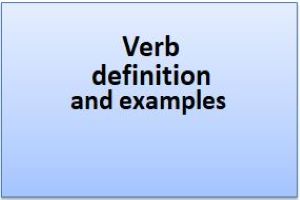Verb definition and examples:
Verbs are the action words in any sentence that describe what the subject is doing. The most crucial part of a sentence or phrase is always a verb or a term because it describes the action that is taking place. In reality, whole thoughts cannot be represented without a verb.
NOTE: To help readers comprehend the examples and distinguish between the verb and the subject, the verb in this entire article will be bold, and the subject will be underlined. (nouns and pronouns).
Verb categories:
There are hundreds of verbs in English that express minor variations in meaning, so picking the proper one is crucial. People who understand verbs will be better writers and communicators.
Physical verbs.
Mental verbs.
State of being verbs.
Physical Verbs:
Physical verbs describe the action of a subject.
or
These verbs describe specific physical movements. If you want to describe any motion or physical task, you have to use a physical verb; otherwise, you cannot describe it.
Examples of physical verbs:
- He ironed his pants. (The action is ironing)
- She climbed up on the wall. (The action is climbing.)
- We hear that voice. (The action is hearing.)
Mental verbs:
Some verbs that describe the subject’s current state of being are called mental verbs.
Or
Mental verbs include words that describe concepts like discovering, thinking, reasoning, organizing, and understanding.
Examples of verbs to describe mental verbs:
- We know the important questions. (The Mental verb is knowing questions.)
- He recognized us from across the window. (The Mental verbs are recognized.)
- Do you believe everything people tell you? (The Mental verb is believing.)
State of being verbs:
State-of-being verbs, often known as linking verbs, describe existing states or situations. Because no action is being taken, state-of-being verbs are inactive. Adjectives are frequently used with these verbs.
Examples of verbs to describe the state of being:
- He feels (Feeling bored is the state of being bored.)
- She prefers milk. (The state of being is preferring milk.)
How to Identify a Verb:
As we know, verbs are an important part of speech in the English language. Verbs are the sentence’s busybodies, serving to bring the entire thought of a sentence to its completion. The location of a verb about the subject is one hint to help you identify the verb. Verbs are used after pronouns and nouns. These nouns and pronouns are called subjects. Let’s consider a few examples here.
In the below sentences, subjects are underlined and verbs are bold.
- Marrye eats her breakfast quickly.
- He went to school.
- They write neatly in notebooks.
Aside from the main three categories of verbs (physical verbs, mental verbs, and state-of-being verbs), verbs come in a variety, which means there are various varieties of verbs. We have three main categories and over 11 different classifications of verbs according to their purpose.
Types of verbs:
- Action verbs
- Stative verbs
- Transitive verbs
- Intransitive verbs
- Linking verbs
- Helping verbs (also called auxiliary verbs)
- Modal verbs
- Regular verbs
- Irregular verbs
- Phrasal verbs
- Infinitives

